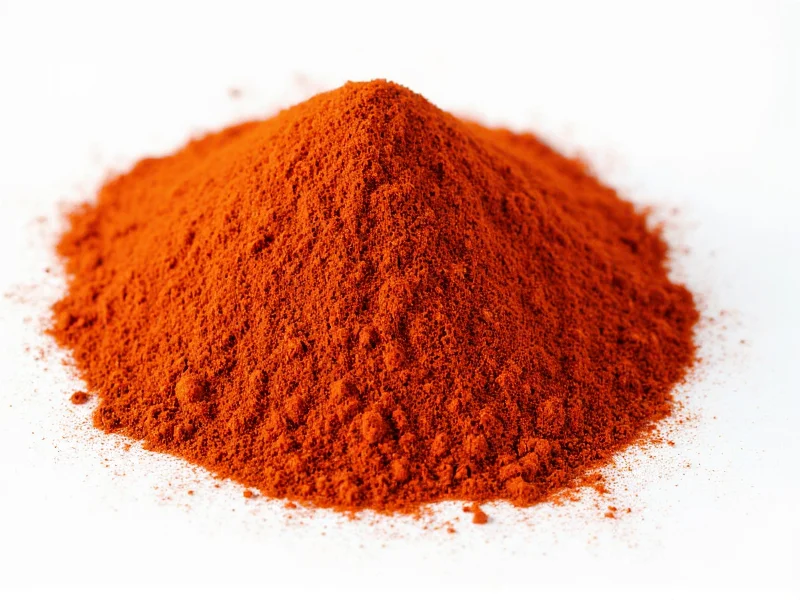Many home cooks mistakenly treat cayenne and paprika as interchangeable, but these spices have distinct characteristics that dramatically affect dish outcomes. Getting them confused can transform a subtle flavor profile into an unexpectedly fiery experience or leave a dish lacking depth. This comprehensive comparison examines their origins, heat levels, flavor profiles, and appropriate culinary applications to help you use each spice effectively.
What Exactly Is Cayenne Pepper?
Cayenne pepper comes from the Capsicum annuum var. acuminatum species, specifically long, slender red peppers that measure 30,000-50,000 Scoville Heat Units (SHU). When dried and ground, these peppers become the bright red powder known as cayenne pepper. Unlike some spice blends, pure cayenne contains no additional ingredients—it's simply ground cayenne peppers.
The flavor profile of cayenne is characterized by immediate, sharp heat with subtle fruity undertones. It delivers a clean, direct burn that builds quickly but doesn't linger excessively. This makes it ideal for dishes where you want noticeable heat without overwhelming complexity. Common applications include:
- Creole and Cajun cuisine
- Hot sauces and condiments
- Marinades for meats
- Spicy rubs and seasoning blends
- Enhancing heat in soups and stews
Understanding Paprika Varieties
Paprika encompasses a broader category of spice made from ground Capsicum annuum peppers, but unlike cayenne, it includes multiple varieties with dramatically different heat levels. The specific peppers used determine paprika's characteristics:
| Paprika Type | Heat Level (SHU) | Flavor Profile | Origin |
|---|---|---|---|
| Sweet Paprika | 0-500 | Earthy, slightly sweet, bell pepper-like | Hungary, Spain |
| Smoked Paprika | 0-2,500 | Woodsy, smoky, complex | Spain (Pimentón) |
| Hot Paprika | 5,000-10,000 | Peppery heat with fruit notes | Hungary |
Authentic Hungarian paprika, considered the gold standard, comes in eight distinct varieties ranging from mild to hot. Spanish paprika (pimentón) is famous for its smoked varieties, which get their distinctive flavor from peppers dried over oak fires. This diversity means "paprika" alone doesn't tell you much about the spice's heat or flavor—always check the label for specifics.
Key Differences Between Cayenne and Paprika
The most critical distinction between these spices is their heat level and flavor complexity:
- Heat intensity: Cayenne consistently delivers significant heat (30,000-50,000 SHU), while paprika ranges from completely sweet to moderately hot
- Flavor complexity: Paprika offers more nuanced flavors including sweet, smoky, or earthy notes, whereas cayenne primarily provides heat with minimal complexity
- Color impact: Both add red color, but paprika generally provides richer coloration without overwhelming heat
- Culinary function: Cayenne is primarily a heat source, while paprika serves as both colorant and flavor enhancer
Can You Substitute One for the Other?
Substitution depends entirely on your recipe's requirements and the specific paprika variety you're using:
- Using paprika instead of cayenne: Only works with hot paprika varieties, and even then you'll need 2-3 times the amount to achieve similar heat. Sweet or smoked paprika won't provide adequate heat and will alter flavor significantly.
- Using cayenne instead of paprika: Will add substantial heat where none was intended. For every 1 teaspoon of paprika, use only 1/8 to 1/4 teaspoon cayenne, plus additional coloring agents like tomato paste if color matters.
When substituting, consider your dish's purpose. For Hungarian goulash that requires paprika's distinctive flavor, cayenne makes a poor substitute. But in a spicy chili where heat is the primary goal, cayenne can effectively replace hot paprika with quantity adjustments.
Nutritional Comparison
Both spices offer similar nutritional benefits as members of the nightshade family, but with some differences due to processing:
- Vitamin content: Paprika generally contains more vitamin C and carotenoids due to being made from riper, sweeter peppers
- Capsaicin levels: Cayenne has significantly higher capsaicin (the compound responsible for heat), which offers metabolic benefits but may irritate sensitive digestive systems
- Antioxidants: Both are rich in antioxidants, but smoked paprika contains additional compounds from the smoking process
Proper Storage for Maximum Freshness
Both spices lose potency quickly when exposed to air, light, and moisture. For optimal shelf life:
- Store in airtight containers away from heat sources
- Keep in dark cabinets (not clear containers on open shelves)
- Replace every 6-12 months for peak flavor (they don't spoil but lose potency)
- Consider refrigeration in humid climates to prevent clumping
Test freshness by rubbing a small amount between your fingers—if the aroma is weak and the color has faded from vibrant red to dull brick, it's time for replacement. Properly stored, these spices maintain quality for 6-12 months, though their heat and flavor gradually diminish over time.











 浙公网安备
33010002000092号
浙公网安备
33010002000092号 浙B2-20120091-4
浙B2-20120091-4